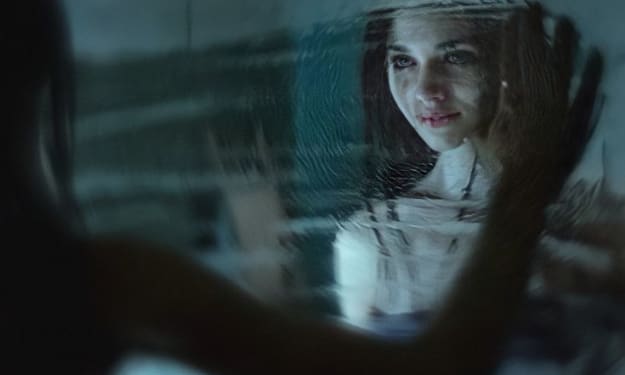Aquatic Deities
The pantheon of aquatic deities represents a diverse and multifaceted tapestry of myth

Immortal Majesty: Exploring the Pantheon of Aquatic Deities
Introduction:
Since time immemorial, humanity has been captivated by the mysteries of the deep seas and vast oceans. In our fascination, we have woven tales of gods and goddesses who rule over these watery realms, embodying the power and majesty of the waters. From ancient civilizations to modern faiths, aquatic deities have held a significant place in mythology, religion, and culture worldwide. In this exploration, we delve into the rich tapestry of aquatic deities, uncovering their origins, attributes, and enduring influence on human civilization.
Ancient Beginnings:
The origins of aquatic deities can be traced back to some of the earliest civilizations known to humankind. In Mesopotamian mythology, the god Ea, also known as Enki, reigned over the waters as the divine ruler of freshwater and wisdom. Depicted as a bearded figure adorned with fish-like features, Ea embodied the dual nature of water as both a life-giving force and a realm of hidden knowledge.
Similarly, in Egyptian mythology, the goddess Isis was closely associated with the Nile River, symbolizing its life-sustaining waters and fertility. As the consort of Osiris, Isis played a central role in the annual flooding of the Nile, which brought fertility to the land and ensured abundance for the people.
In Hindu mythology, the god Varuna presided over the cosmic waters, embodying the principles of order, justice, and cosmic law. Often depicted riding a mythical sea creature known as Makara, Varuna maintained balance and harmony in the universe, ensuring the smooth flow of cosmic waters.
These ancient deities served as guardians and patrons of the waters, guiding and protecting humanity in their eternal domains. As civilizations flourished and maritime exploration expanded, new aquatic deities emerged, reflecting the evolving relationship between humanity and the seas.
Oceanic Marvels:
The vastness of the oceans has inspired awe and reverence in cultures around the world, giving rise to a diverse array of oceanic deities and mythologies. In Greek mythology, Poseidon, the god of the seas, wielded immense power over the oceans, commanding the waves and storms with his trident. Often depicted riding a chariot drawn by sea creatures, Poseidon embodied both the fury and the bounty of the seas, shaping the destinies of sailors and seafarers.
In Norse mythology, the sea god Ægir ruled over the tumultuous waters of the North Sea, hosting grand feasts in his underwater hall. Accompanied by his wife, the sea goddess Ran, Ægir was both feared and revered by sailors, who offered sacrifices to appease his wrath and seek safe passage through his domain.
The Polynesian cultures of the Pacific Islands revered Tangaroa, the god of the sea, as a benevolent deity who provided sustenance and protection to his people. As the creator of all sea creatures, Tangaroa commanded the respect and admiration of fishermen and sailors, who invoked his blessings before embarking on their voyages.
These oceanic deities embodied the primordial forces of creation and destruction, symbolizing the eternal cycle of life, death, and renewal that characterizes the seas. As seafaring civilizations flourished and maritime trade routes expanded, the influence of aquatic deities spread far and wide, shaping the beliefs and practices of diverse cultures.
Modern Interpretations:
In contemporary times, the allure of aquatic deities continues to captivate the human imagination, inspiring artists, writers, and scholars to explore new interpretations and representations of these timeless beings. In literature, authors like Jules Verne and H.P. Lovecraft have drawn upon the mythic themes of the sea to create immersive worlds filled with wonder and terror.
In art, painters such as Winslow Homer and Hokusai have captured the sublime beauty and power of the oceans, depicting mythical sea creatures and deities in vivid detail. In cinema, filmmakers like Hayao Miyazaki have crafted animated masterpieces that celebrate the magic and mystery of the sea, inviting audiences to embark on fantastical journeys to underwater realms.
In spirituality, practitioners of modern Pagan and Neopagan traditions often invoke the blessings of aquatic deities in rituals and ceremonies honoring the natural world. From Wiccan covens to Druid groves, devotees of the goddess Yemaya, the Orisha of the oceans in the Yoruba tradition, offer prayers and offerings to seek her guidance and protection in their spiritual journeys.
Conclusion:
In conclusion, the pantheon of aquatic deities represents a diverse and multifaceted tapestry of myth, legend, and symbolism that transcends time and culture. From the ancient civilizations of Mesopotamia and Egypt to the modern world of literature, art, and spirituality, these watery gods and goddesses continue to inspire and enchant humanity with their eternal presence and timeless wisdom. As we navigate the turbulent waters of life, may we find solace and strength in the enduring majesty of the aquatic deities who watch over us with benevolent eyes.






Comments
There are no comments for this story
Be the first to respond and start the conversation.